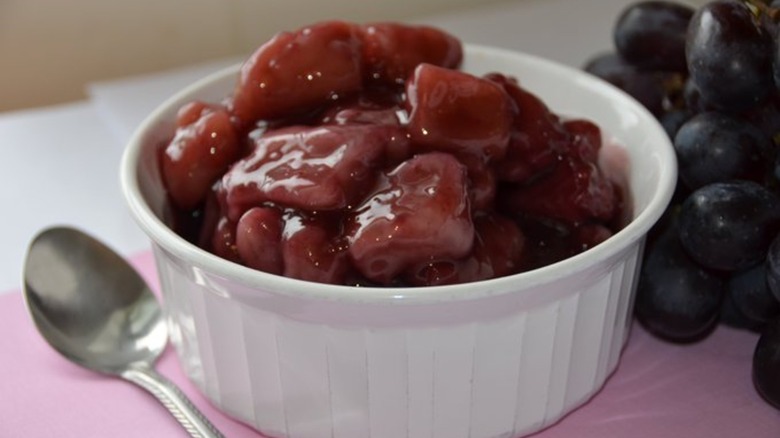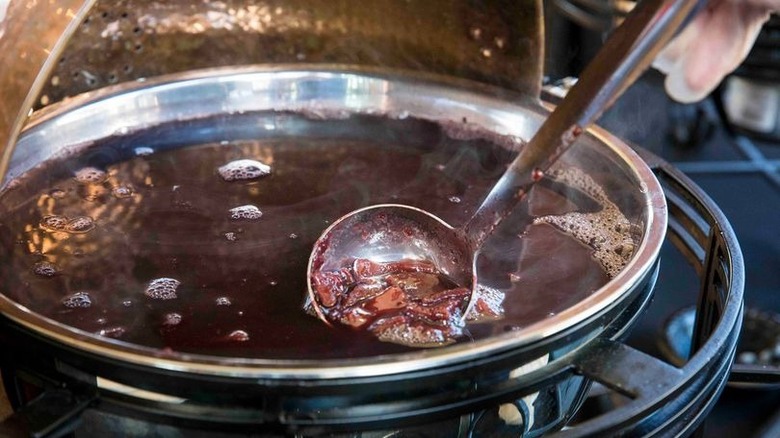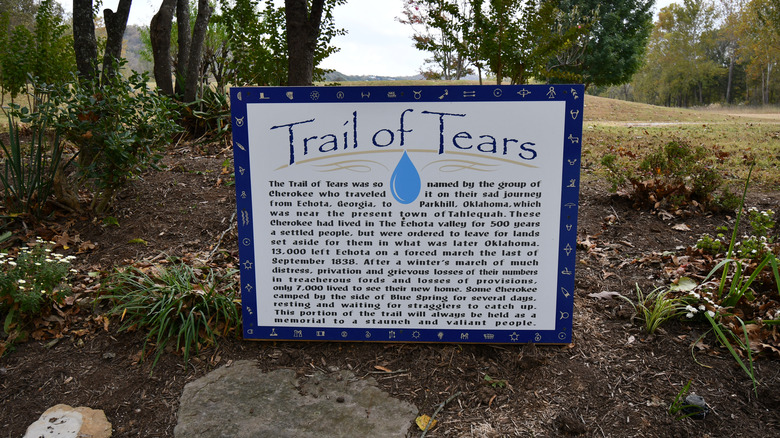The Cherished Indigenous Grape Dumpling Dessert With A Rich History
Take a moment to consider this question: what is American food? A lot of people would probably reduce it to hamburgers and hot dogs, while a broader perspective might highlight regional favorites such as soul food, barbecue, or even the more recent farm-to-table movement. But there is a significant culinary tradition that goes overlooked by the vast majority of people these days, one with closer ties to this land than any of the foods we just listed. We're talking about the original American cuisine, which was invented by Indigenous peoples. Many popular foods have Indigenous roots that are rarely acknowledged, and now that Native Americans comprise just two percent of the U.S. population, centuries-old meals such as pemmican and jellied moose are ignored by much of the nation. Those are meaty staples, but if you're craving dessert, you need to know about the sweet grape dumplings known to some as panki' alhfola'.
What is panki' alhfola'?
Grape dumplings are a centuries-old treat that originated with the Native tribes of the Southeast, particularly the Chickasaw, Cherokee, and Choctaw tribes. The name panki' alhfola' comes from the Chickasaw language, and we'll be using it throughout this article. It's not the dumplings that are made from grapes, but rather they are boiled in a mixture of grape juice and sugar. In the process, they become infused with grape flavor, and the juice thickens to form a syrup. The dumplings themselves are made from a dough that is rolled thin and cut into small pieces, about half an inch to one-inch square. Originally, the dumplings were made from cornmeal, but these days many cooks use flour and sugar for a sweeter result. The shift from corn to wheat was propelled by colonization, as wheat is not native to the Americas but rather an import from Europe. This is not the only way that the colonial takeover of Native land changed the nature of panki' alhfola', as this dish is tied to one of the darkest events in American history.
Panki' alhfola' evolved through hardship
Not only have the dumplings in panki' alhfola' changed due to colonial forces, but the grape syrup has transformed as well. The sauce was originally made from freshly-juiced possum grapes, which have a unique, tangy flavor. They grow in certain regions of the American Southeast that were once home to the Chickasaw, Choctaw, and Cherokee, namely the present-day states of Alabama, Mississippi, Tennessee, and Kentucky. However, possum grapes are rarely used in panki' alhfola' today, being replaced by store-bought grape juice. This is due to the fact that these Indigenous tribes were driven out of their homeland when notoriously brutal President Andrew Jackson signed the Indian Removal Act in 1830. The American government forced Natives westward in what has become known as the Trail of Tears, ultimately landing in Oklahoma, where these tribes are still based today. The Chickasaw Nation refers to this as the darkest event in their history, and it took a heavy toll on their cultural traditions. And yet, panki' alhfola' survives to this day, a testament to resilience, determination, and an enduring respect for past generations.


